Overrated at the Oscars: Best Picture winners most out of step with critical opinion
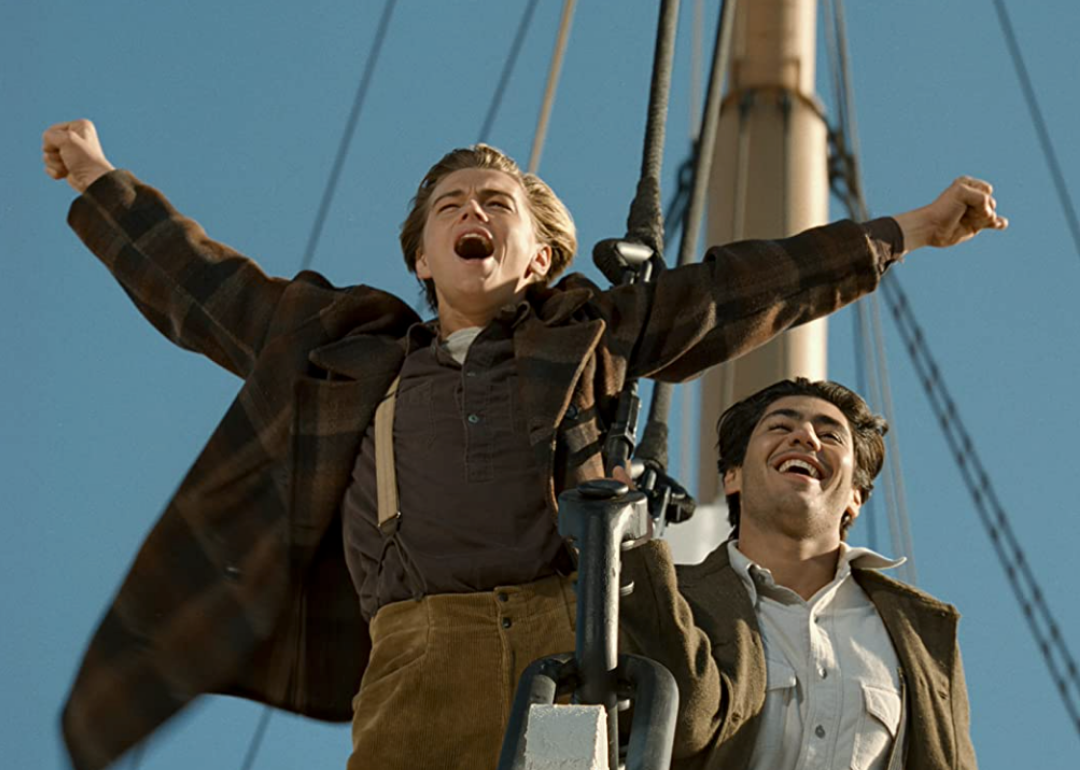
Paramount Pictures
Overrated at the Oscars: Best Picture winners most out of step with critical opinion
Leonardo DiCaprio and Danny Nucci in a scene from ‘Titanic’
The glitz and glamour of the Oscars is not enough to mask the controversies surrounding the coveted awards ceremony. Conceptualized in 1927 by the Academy of Motion Picture Arts and Sciences, the first Academy Awards ceremony was held in 1929 to honor exceptional work in film.
Since then, an Oscar has become one of the most prestigious awards in the film industry. Its prominence in the field has also made others question how reflective a Best Picture win is of a film’s overall quality. In any given year, many cinephiles often feel their favorite films, directors, and actors are snubbed during awards season. Others have accused the Oscars of genre bias, with foreign language films often being pushed to the side in major categories. With all this in mind, how closely does an Oscar win match critical opinion?
Stacker ranked the 30 Best Picture winners most out of step with critical opinion in Oscars history using Metacritic ratings. To gauge which films were the most overrated by the Academy, each Best Picture winner’s Metascore—what Metacritic calls its critical review index, which is graded out of 100—was compared to the highest-rated nominee in the same year. Winners with the largest differences made this list, with ties broken by each film’s overall Metascore.
Some years were not included due to limited Metacritic data—80 years were analyzed out of the award’s 95-year existence. It is worth noting that Metascore is a weighted average of published critic reviews. Metacritic’s internal weights and selection of publications dictate the scope and scale of the figures presented below.
Over the eight decades analyzed, the 419 Best Picture nominees hold an average Metascore of 80.2, while the winners of the top award fare better with an average 83.6 rating. However, this year’s crop of nominees looks to be below par, only mustering an average of 77. It is the second-lowest average Metascore of Best Picture nominees since the Academy expanded the number of nominations in 2010 (the 2012 slate—the year “The Artist” took home Best Picture—had an average Metascore of 76.6).
In addition, of the Best Picture nominees analyzed, 29 (or roughly 36%) turned out to be Best Picture winners and the highest-rated nominee of that year. It means the Cate Blanchett-led “Tár”—this year’s top-rated Best Picture nod—has a little better than a one-in-three chance of winning this March. If “Tár” doesn’t win, there’s a reasonable shot that the Best Picture winner will end up on this list. Besides “The Banshees of Inisherin” and “The Fabelmans,” the other seven nominees are all nine or more points lower than “Tár,” which would place them among the 30 winners listed here.
When it comes to a foreign film’s prospects of winning the top prize, critics are right to doubt its chances. Stacker found that foreign films, when nominated for Best Picture, are most likely to lose out despite outperforming Best Picture-winning films in Metacritic ratings. “Crouching Tiger, Hidden Dragon,” “Roma,” and “Drive My Car” were the highest-rated nominees in the same year they lost to far lower-rated films like “Gladiator,” “Green Book,” and “CODA,” respectively.
What’s more, the rating gaps between foreign films and Best Picture-winning films are the widest in our analysis. Both “Crouching Tiger, Hidden Dragon” and “Roma” led by 27 Metascore points over the eventual Best Picture winners “Gladiator” and “Green Book.” Based on these numbers, it’s no wonder that it took almost a century for a foreign film to win Best Picture (for Bong Joon-ho’s “Parasite” in 2020).
So, if you’ve ever wondered which Oscar Best Picture films earned more applause than perhaps they should have, read on below.
You may also like: 25 iconic closing shots from film history
![]()
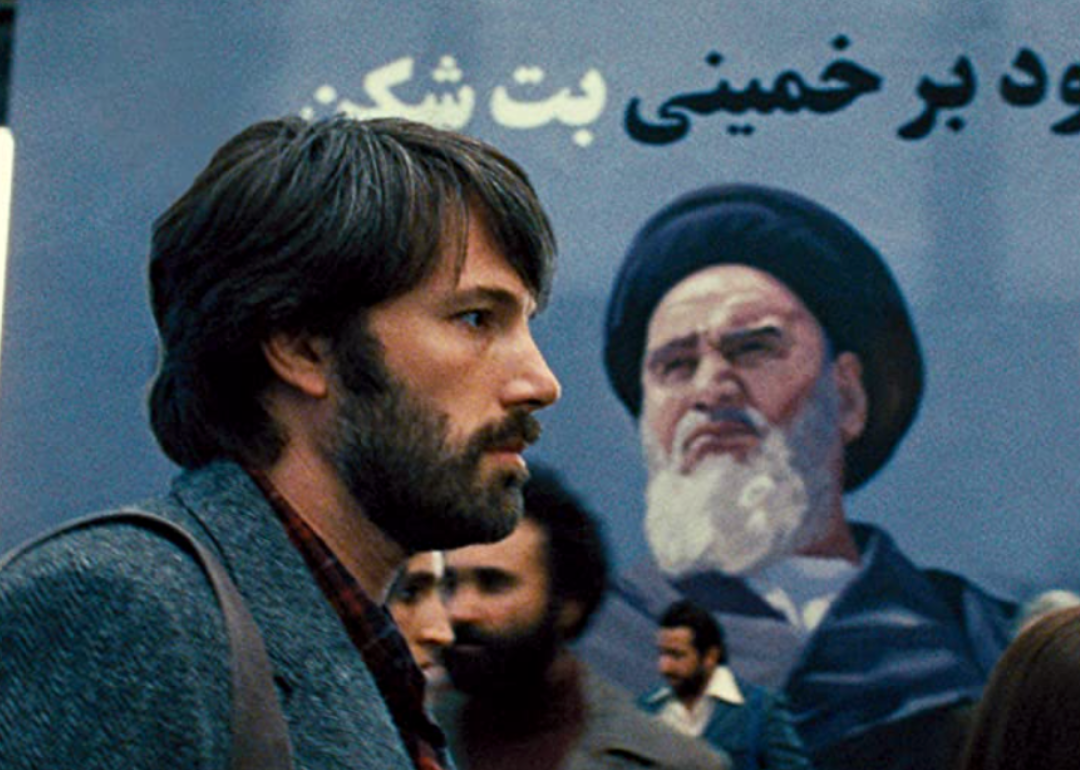
Warner Bros.
#30. Argo (2012)
Ben Affleck in a scene from ‘Argo’.
– Director: Ben Affleck
– Metascore: 86
– Highest-rated Metascore: 95 (“Zero Dark Thirty” and “Amour”)
– Difference: 9 points
Lauded upon its release for Ben Affleck’s performance and direction, “Argo” brought CIA operative Tony Mendez’s incredible true story to the mainstream, a man who smuggled six American diplomats out of Iran in 1980 by having the group pose as a film production crew. Upon its win for Best Picture, there was criticism around the depiction of the Iranian people and liberties taken with the adaptation of Mendez’s memoir, as well as the choice to cast Affleck, a white actor, as a Latino character, and his subsequent dismissal of these criticisms.
Many felt that nominees “Zero Dark Thirty” and “Amour” were snubbed, although controversy surrounded “Zero Dark Thirty” upon its release due to factual inaccuracies and graphic depictions of torture, while “Amour” may have been dismissed due to the French film’s difficult subject matter.
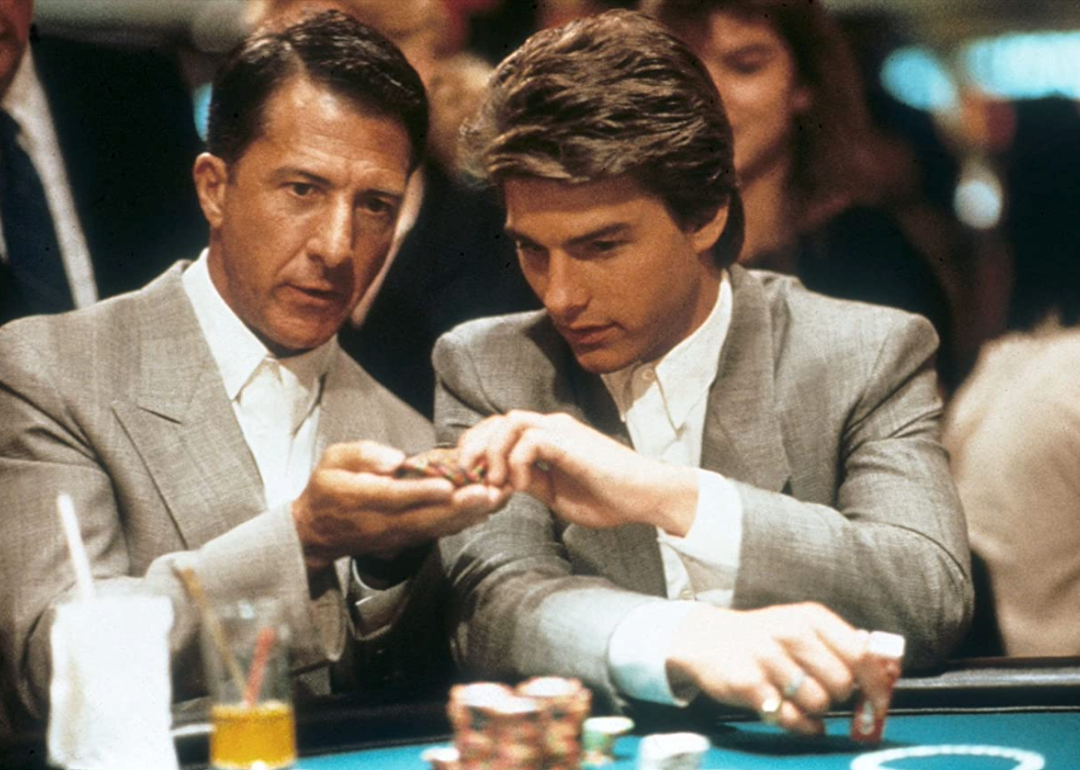
Metro-Goldwyn-Mayer (MGM)
#29. Rain Man (1988)
Tom Cruise and Dustin Hoffman in a scene from ‘Rain Man’.
– Director: Barry Levinson
– Metascore: 65
– Highest-rated Metascore: 74 (“Dangerous Liaisons”)
– Difference: 9 points
1989 was the weakest Oscar year in terms of film critic reviews. The five nominees for Best Picture only averaged a 66 Metascore. “Rain Man” was uncharted territory, depicting the fictional relationship of autistic genius Raymond Babbitt and his younger brother Charlie, played by Dustin Hoffman and Tom Cruise, respectively. While the film provided a broader awareness of autism, some criticize the stereotypes it perpetuates. Meanwhile, the malevolent and erotic period drama “Dangerous Liaisons”—the highest-rated Best Picture nominee of that year—secured three wins out of its seven Academy Award nominations, but it failed to secure a Best Picture victory.
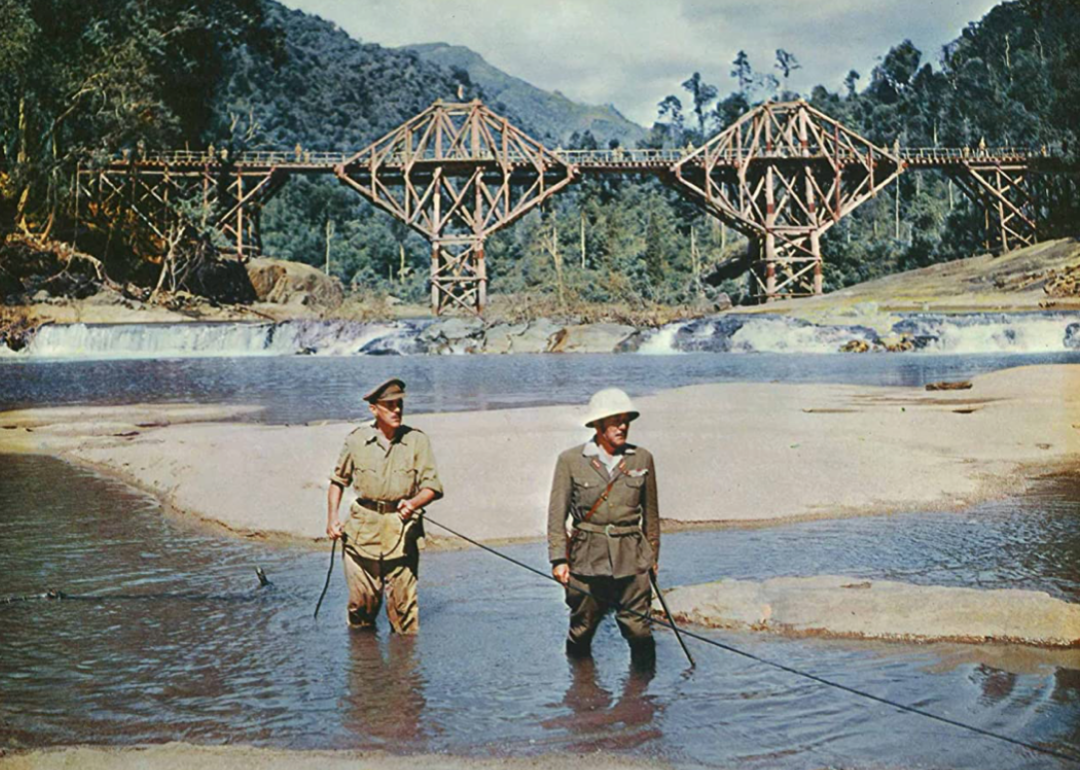
Columbia Pictures
#28. The Bridge on the River Kwai (1957)
Alec Guinness and Sessue Hayakawa in ‘The Bridge on the River Kwai’.
– Director: David Lean
– Metascore: 87
– Highest-rated Metascore: 97 (“12 Angry Men”)
– Difference: 10 points
Set in a Japanese prisoner-of war-camp in 1940s Burma, the story of British prisoners and the forced labor of the Burma-Siam Railway has captivated audiences since its release, and is considered to be one of the greatest films of the 20th century. While it secured seven Oscars out of eight nominations, the film has been criticized for its inaccurate portrayal of captured prisoners’ cooperation with the Japanese.
That same year, “12 Angry Men,” Sidney Lumet’s courtroom drama about prejudice and the judicial system, received rave reviews and remains in IMDb’s top 10 movie rankings, yet was snubbed for a win by the Oscars despite receiving three nominations for Best Picture, Best Director, and Best Adapted Screenplay.
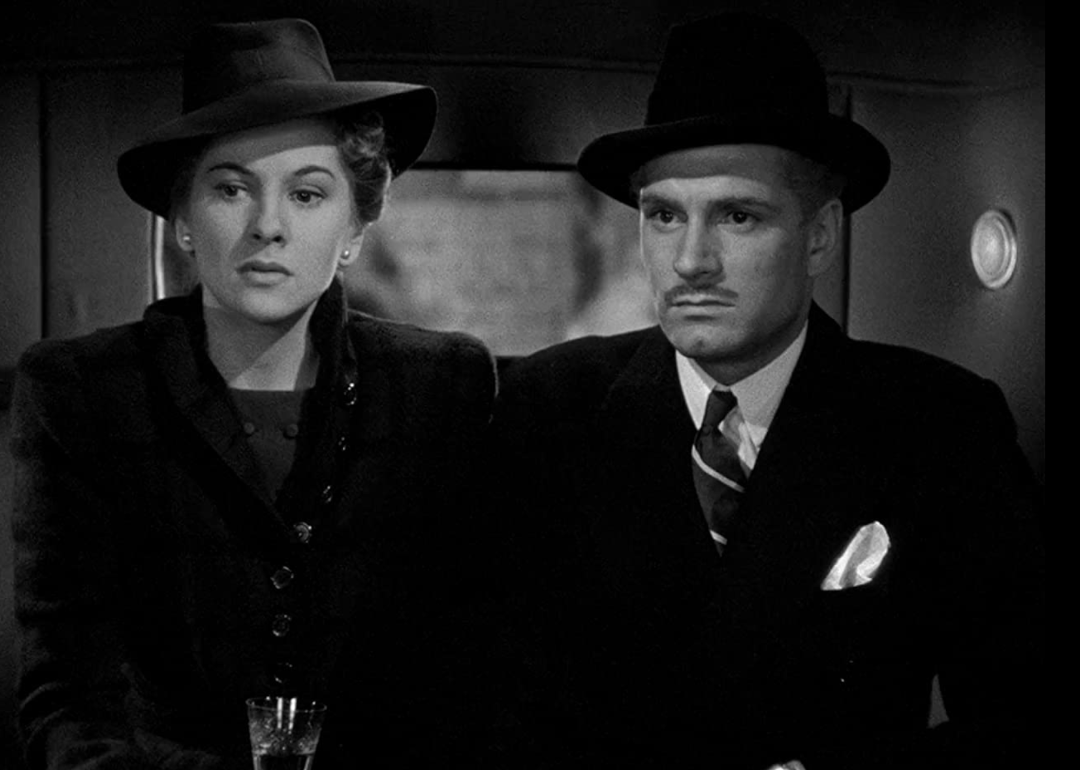
20th Century Fox
#27. Rebecca (1940)
Joan Fontaine and Laurence Olivier in ‘Rebecca’.
– Director: Alfred Hitchcock
– Metascore: 86
– Highest-rated Metascore: 96 (“The Grapes of Wrath” and “The Philadelphia Story”)
– Difference: 10 points
While Alfred Hitchcock’s stylish psychological and romantic thriller “Rebecca” ultimately won Best Picture, the 1941 Oscars included a strong year for films. Best Picture nominated films in that year with a Metascore averaged 91.8. The top two movies of the year, “The Grapes of Wrath” and “The Philadelphia Story,” both rated 96. While these two films brought home awards in other categories that night, the Best Picture prize wasn’t in the cards. Perhaps the political and social issues depicted in ‘The Grapes of Wrath” were too controversial. “The Philadelphia Story,” on the other hand, was a comedy, a genre not often seen as Best Picture worthy.
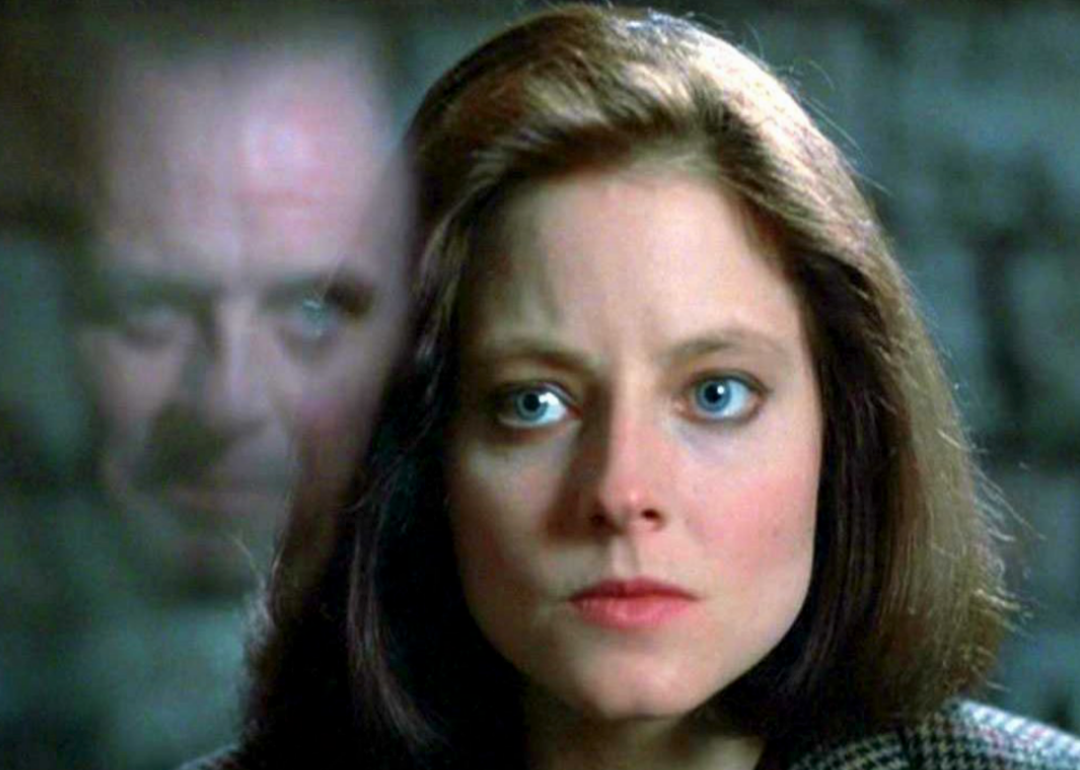
Metro-Goldwyn-Mayer (MGM)
#26. The Silence of the Lambs (1991)
Jodie Foster and Anthony Hopkins in ‘The Silence of the Lambs’.
– Director: Jonathan Demme
– Metascore: 85
– Highest-rated Metascore: 95 (“Beauty and the Beast”)
– Difference: 10 points
While “Silence of the Lambs” remains a twisted and tantalizing tale of psychological horror, the film has been criticized since its release for its offensive and inaccurate portrayal of transgender people through the movie’s villain, Buffalo Bill. Despite backlash from the LGBTQ+ community, the film remains the only horror film to win Best Picture and one of only three films to secure wins in all five major Oscar categories.
In comparison, Disney’s “Beauty and the Beast” was a spellbinding classic deemed revolutionary for its harmonious unification of hand-drawn and computer animation. It was the first animated film to receive a Best Picture nod, and only three animated films have earned Best Picture nominations to this day. It remains the only animated movie on the list of highest-rated best picture nominees, and its genre may have contributed to its loss to “The Silence of the Lambs” at the awards ceremony.
You may also like: Biggest box office bombs of all time
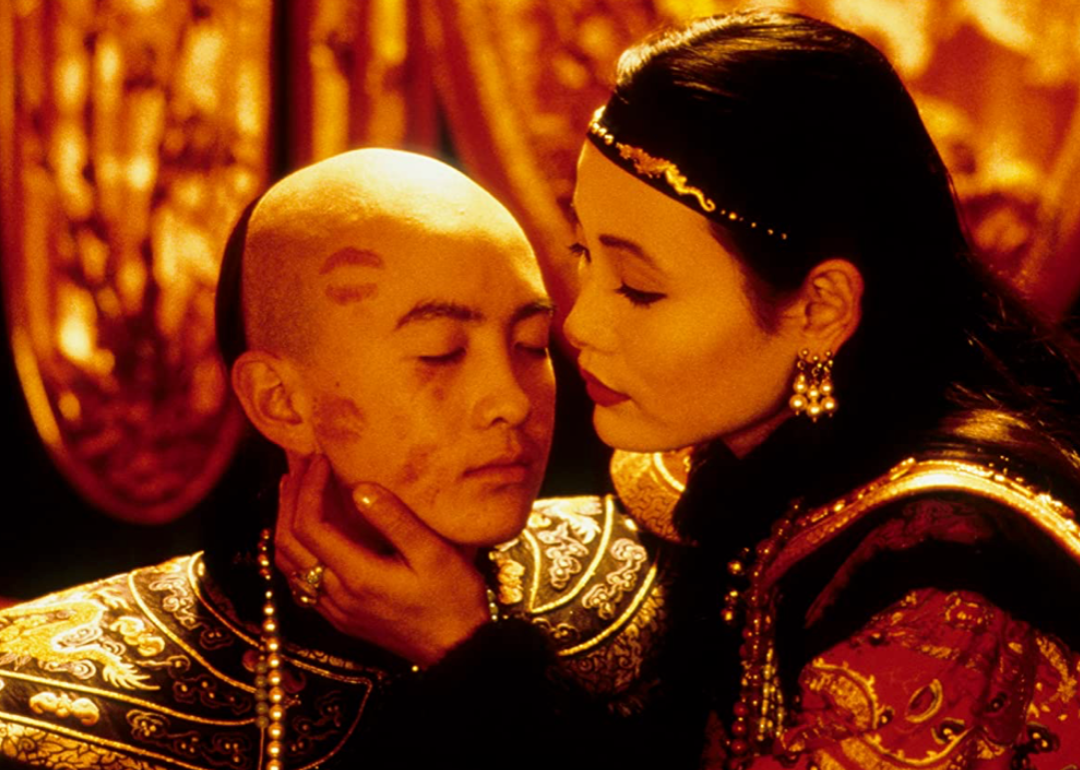
Columbia Pictures
#24. The Last Emperor (1987) (tied)
Joan Chen and Tao Wu in ‘The Last Emperor’.
– Director: Bernardo Bertolucci
– Metascore: 76
– Highest-rated Metascore: 86 (“Hope and Glory”)
– Difference: 10 points
“The Last Emperor” enchanted audiences with its tale of Emperor Pu Yi, who took the throne in 1908 at the age of 3. The Chinese epic swept the 1988 Oscars, securing nine wins. However, it was criticized for historical inaccuracies in depicting Pu Yi’s life. In contrast, John Boorman’s “Hope and Glory” was a lighthearted turn from his signature violent films. “Hope and Glory” was based on Boorman’s boyhood in London during World War II. While it failed to secure Best Picture, it was a critical success. It also won the Golden Globe for Best Motion Picture and was nominated in five Oscar categories.
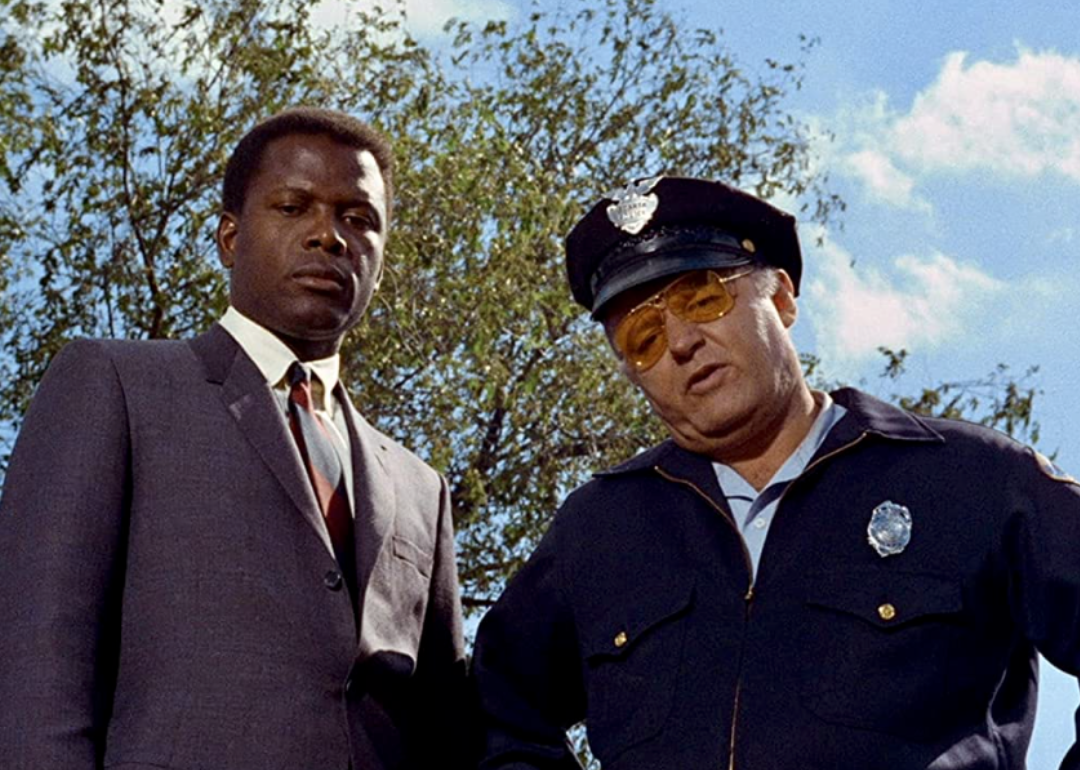
Metro-Goldwyn-Mayer (MGM)
#24. In the Heat of the Night (1967) (tied)
Sidney Poitier and Rod Steiger in ‘In the Heat of the Night’.
– Director: Norman Jewison
– Metascore: 76
– Highest-rated Metascore: 86 (“Bonnie and Clyde”)
– Difference: 10 points
While “In the Heat of the Night” took home the prize at the 1968 Oscars, the nominee roster was one of the lowest-rated in Oscar history with an average 68.4 rating, brought down by “Doctor Dolittle,” which has the all-time lowest Metascore for Best Picture at 34. Without “Doctor Dolittle,” the year’s roster would have brought in a respectable 77 Metascore rating.
Meanwhile, the stylish and pulpy “Bonnie and Clyde” was lauded by viewers and some critics but was riddled with controversy due to its glamorization of the Great Depression-era murderers and sexual overtones throughout the film. This might be why “In the Heat of Night” took home Best Picture. Its subject matter, a mystery thriller with a Black police detective who teams with an intolerant Southern sheriff on a murder investigation, was comparatively more palatable.

20th Century Fox
#23. How Green Was My Valley (1941)
Maureen O’Hara in ‘How Green Was My Valley’.
– Director: John Ford
– Metascore: 88
– Highest-rated Metascore: 100 (“Citizen Kane”)
– Difference: 12 points
“How Green was my Valley” is an emotional and tender epic about family, and exemplifies John Ford’s masterful direction, with the film earning 10 Oscar nominations and winning five. The 1942 Oscars was a tight race for Best Picture nominees. Submissions included “The Maltese Falcon” (97 Metascore) and “Citizen Kane” (100 Metascore).
The now-classic “Citizen Kane” was one of two Best Picture nominees to obtain a perfect Metascore but not secure a Best Picture win, the second being Richard Linklaters’s “Boyhood.” Many feel that Orson Welles’ “Citizen Kane” was snubbed due to his contentious relationship with William Randolph Hearst, the newspaper mogul on which Welles based his titular character. Indeed, Hollywood bigwigs flocked to Hearst’s side. It would take more than two decades for the film to receive its well-deserved accolades.
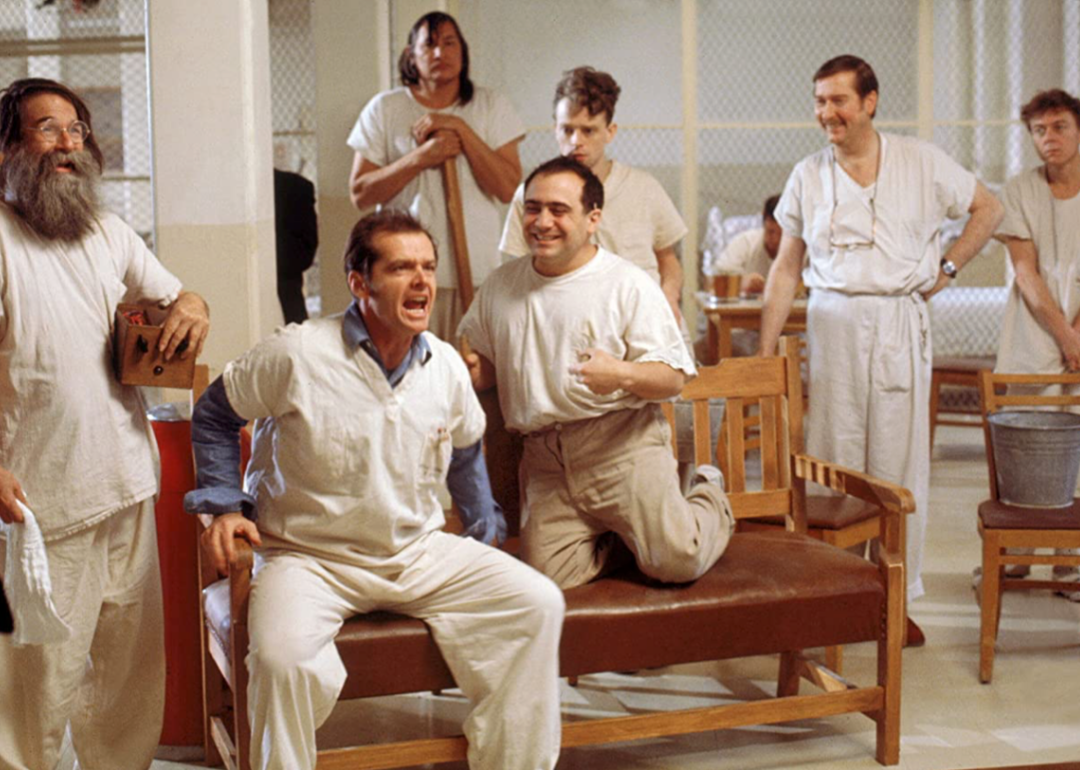
Warner Bros.
#22. One Flew Over the Cuckoo’s Nest (1975)
Jack Nicholson and cast in ‘One Flow Over the Cuckoo’s Nest’.
– Director: Milos Forman
– Metascore: 84
– Highest-rated Metascore: 96 (“Nashville”)
– Difference: 12 points
In another tight race, “One Flew Under the Cuckoo’s Nest” took home Best Picture, despite having the lowest Metascore among the year’s nominees. The film garnered an 84 Metascore versus the average 88.4. While the film and Jack Nicholson’s performance are considered some of the greatest of all time, Ken Kesey famously detested the changes made to his novel in the adaptation and the filmmakers’ choice to cast Chief as a secondary character, despite his prominence and narration in the novel.
“Nashville,” on the other hand, garnered a 96 Metascore. It delighted and captivated with its 24-character musical ensemble but divided audiences as some criticized its portrayal of blue-collar Southerners and country music.
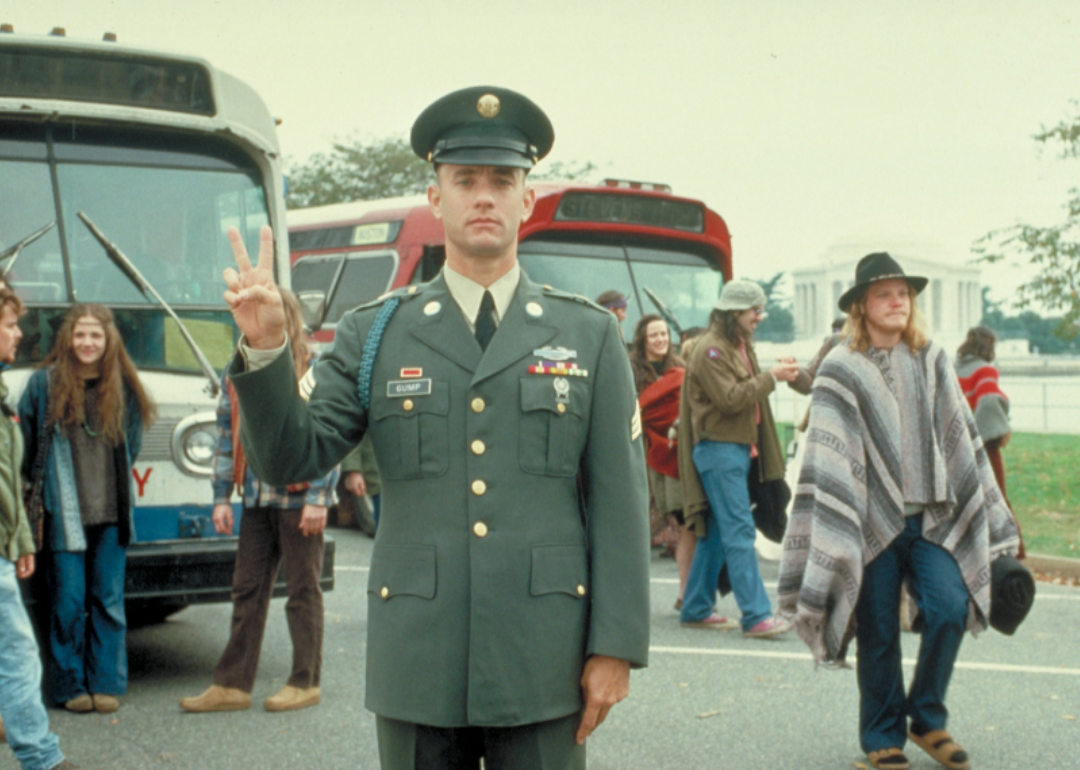
Paramount Pictures
#21. Forrest Gump (1994)
Tom Hanks in a scene from ‘Forrest Gump’.
– Director: Robert Zemeckis
– Metascore: 82
– Highest-rated Metascore: 94 (“Pulp Fiction”)
– Difference: 12 points
While “Forrest Gump” has warmed the hearts of moviegoers since its release, the emotional yet comedic tale led by a lovable Tom Hanks is no stranger to criticism. Many issues in the movie—such as racism, war, political activism, and mental disabilities—feel oversimplified or stereotypical in their portrayal. Many still feel that underdog “Pulp Fiction” (which garnered the highest Metascore of that slate) should have secured the top prize. That year, “Pulp Fiction” did win the Oscar for Best Original Screenplay, and Quentin Tarantino went on to direct three more Best Picture nominated films.
You may also like: 50 times actors hated their own movies
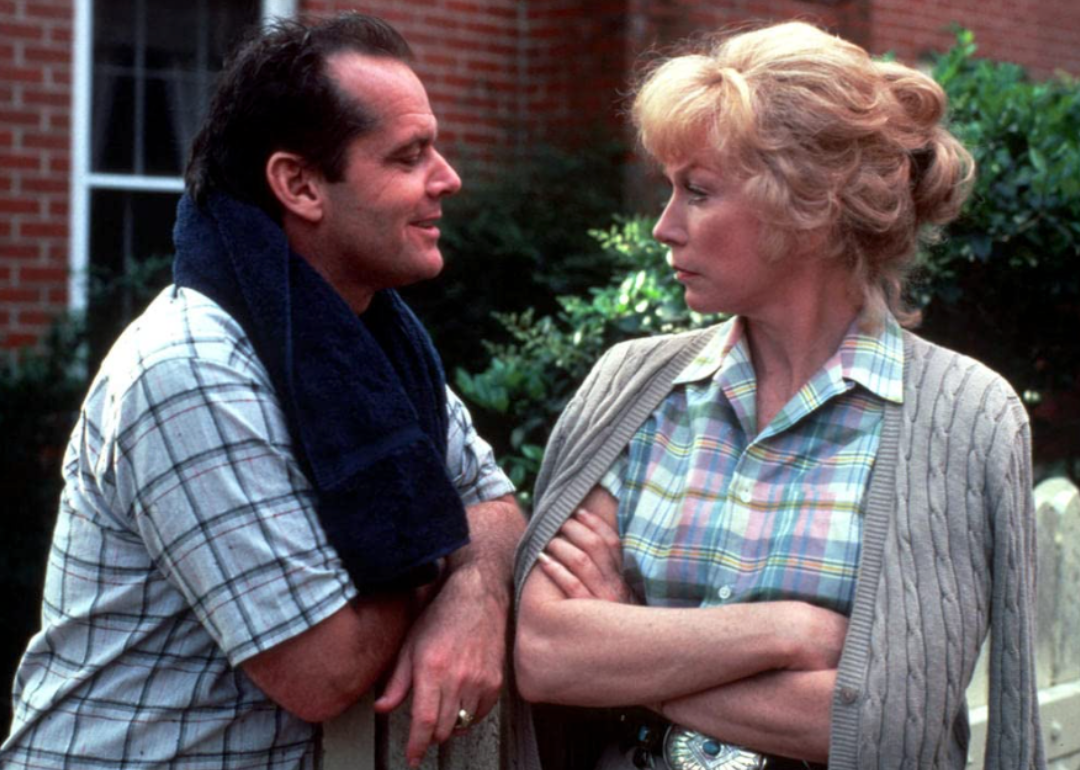
Paramount Pictures
#19. Terms of Endearment (1983) (tied)
Jack Nicholson and Shirley MacLaine in ‘Terms of Endearment’.
– Director: James L. Brooks
– Metascore: 79
– Highest-rated Metascore: 91 (“The Right Stuff”)
– Difference: 12 points
Soapy, dramatic, tear-jerking, and funny, “Terms of Endearment” tells the story of a neurotic mother and her rebellious daughter throughout the years and was met with critical and commercial success. Among the nominees for Best Picture that year was Philip Kaufman’s “The Right Stuff,” a visually stunning depiction of the Mercury 7 astronauts and Chuck Yeager breaking the sound barrier in 1947. Although the film lost to James L. Brooks’ touching directorial debut, the film remains a gripping historical account of post-WWII tensions and new technologies. It kick-started long careers for its main cast.
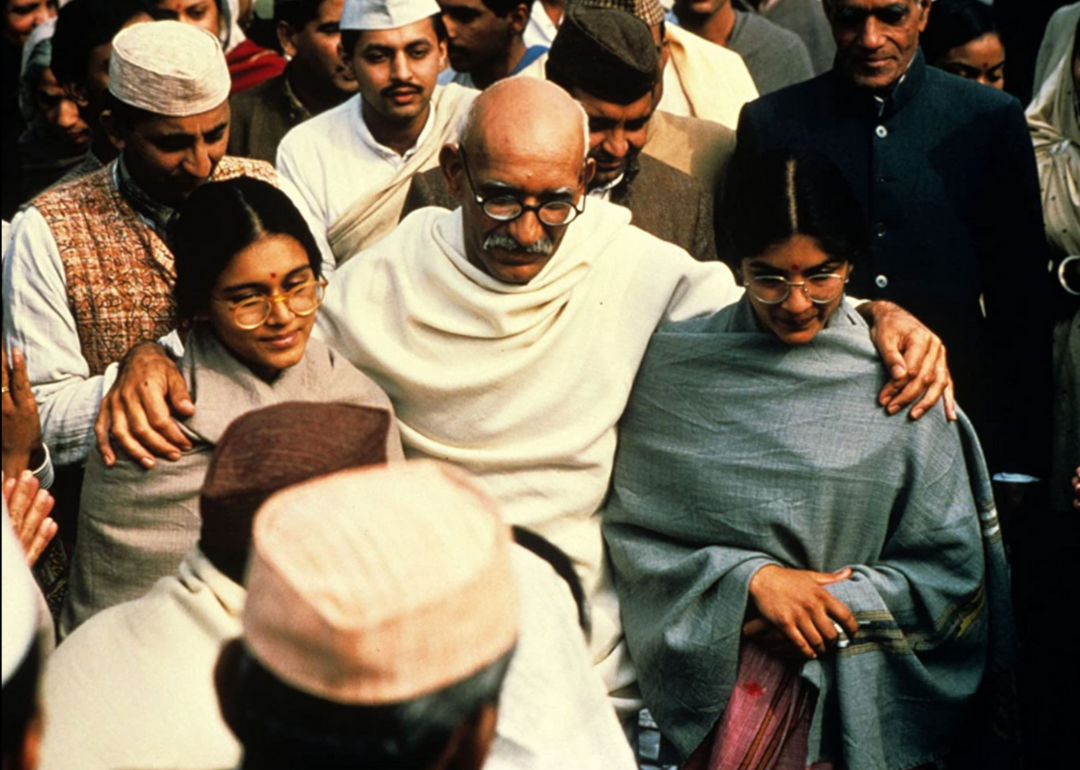
Columbia Pictures
#19. Gandhi (1982) (tied)
Ben Kingsley, Neena Gupta, and Supriya Pathak in ‘Gandhi’.
– Director: Richard Attenborough
– Metascore: 79
– Highest-rated Metascore: 91 (“E.T. the Extra-Terrestrial”)
– Difference: 12 points
“E.T. the Extra-Terrestrial” captured the hearts of children and adults alike in Steven Spielberg’s masterpiece and is one of the few children’s movies to hold the highest Metacritic score among other Best Picture nominated films released the same year. Despite this, Richard Attenborough’s “Gandhi” won eight Oscars, including Best Director and Best Picture, although the film was met with mixed receptions from nationalists and historians. Interestingly, Attenborough would go on to star in Spielberg’s “Jurassic Park” a decade after this Oscar ceremony.
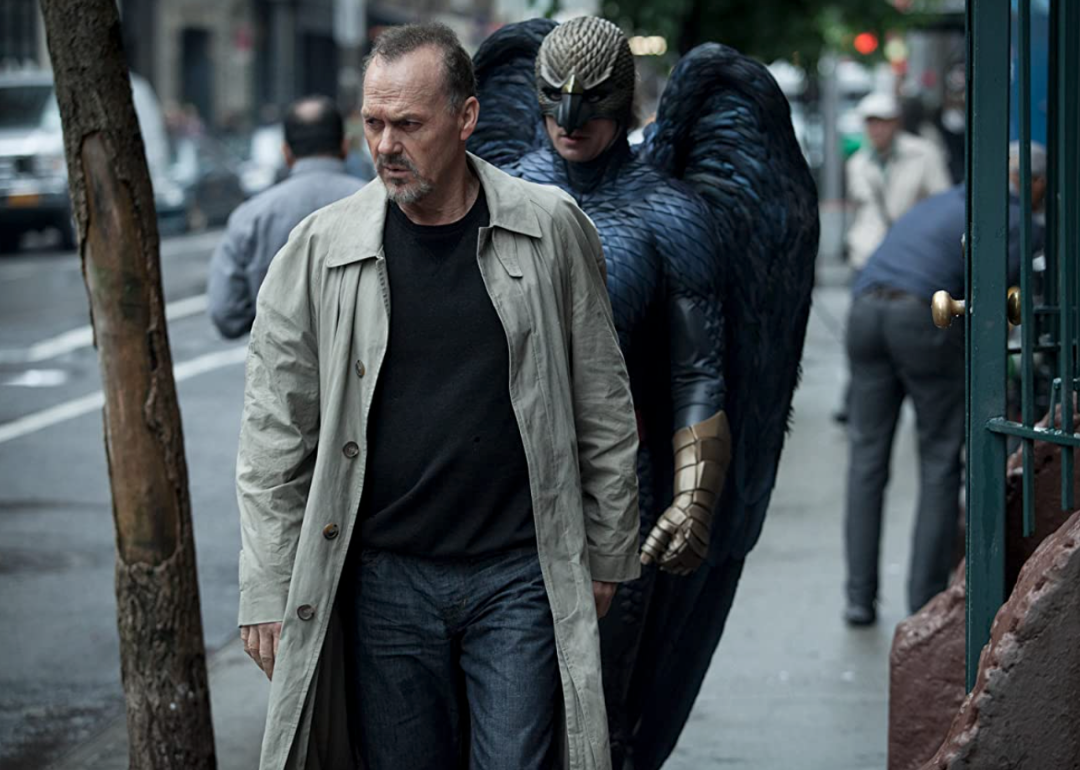
Fox Searchlight
#18. Birdman or (The Unexpected Virtue of Ignorance) (2014)
Michael Keaton in ‘Birdman or (The Unexpected Virtue of Ignorance)’.
– Director: Alejandro G. Iñárritu
– Metascore: 87
– Highest-rated Metascore: 100 (“Boyhood”)
– Difference: 13 points
“Birdman or (The Unexpected Virtue of Ignorance)” was lauded upon its release for its “one-shot” style in which the movie is seemingly filmed in a single shot and Michael Keaton’s portrayal of a washed-up actor’s descent into a strange world of magical realism. Despite its accolades, it was up against tough competition—namely, Richard Linklater’s “Boyhood,” which earned a perfect Metascore rating—and its win for Best Picture surprised many. “Boyhood” made history as a film that took 12 years to make while using the same cast throughout and captured the instability and awe of American childhood.
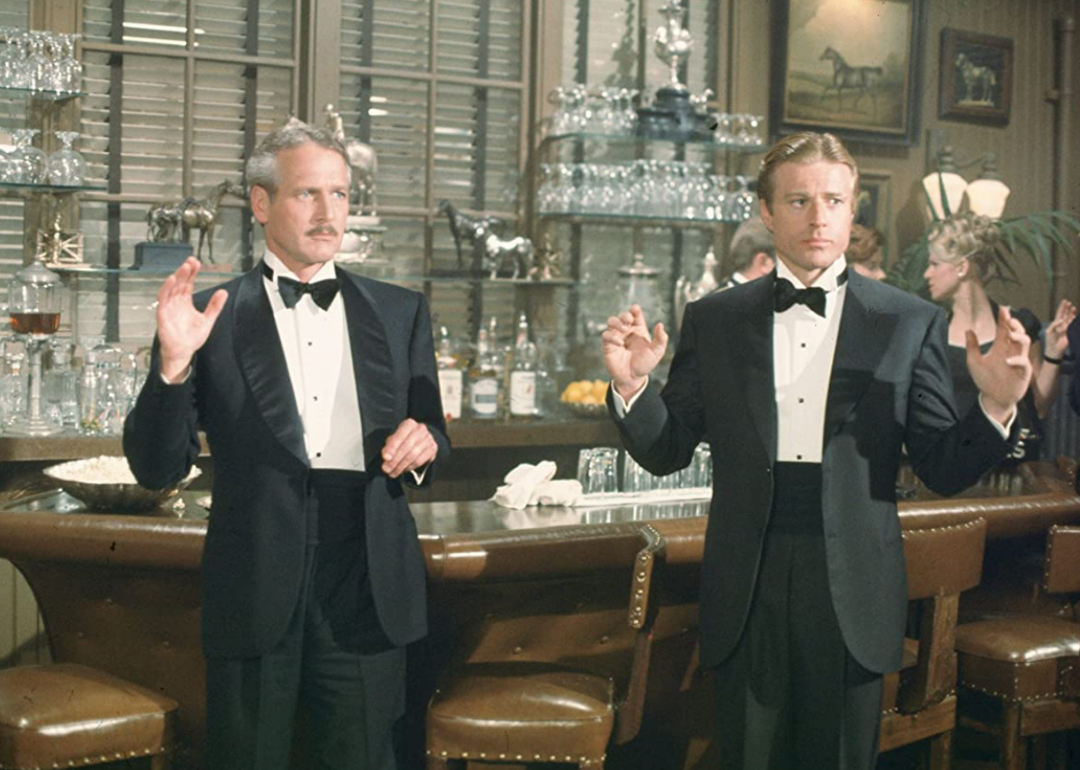
Universal Pictures
#16. The Sting (1973) (tied)
Paul Newman and Robert Redford in ‘The Sting’.
– Director: George Roy Hill
– Metascore: 83
– Highest-rated Metascore: 97 (“American Graffiti”)
– Difference: 14 points
The tale of two con artists in Chicago makes for a sharp-witted but skin-deep adventure in “The Sting,” which prompted raised eyebrows at its Best Picture win and 10 total nominations at the 1974 Oscars. George Lucas’ “American Graffiti” on the other hand, is a beloved coming-of-age tale set in the dying days of summer inspired by Lucas’ upbringing in Modesto, California. The film received five Oscar nominations despite a sleepy start in theaters but has proven lucrative throughout the years, with a domestic lifetime gross of $115 million against an estimated $777,000 budget.
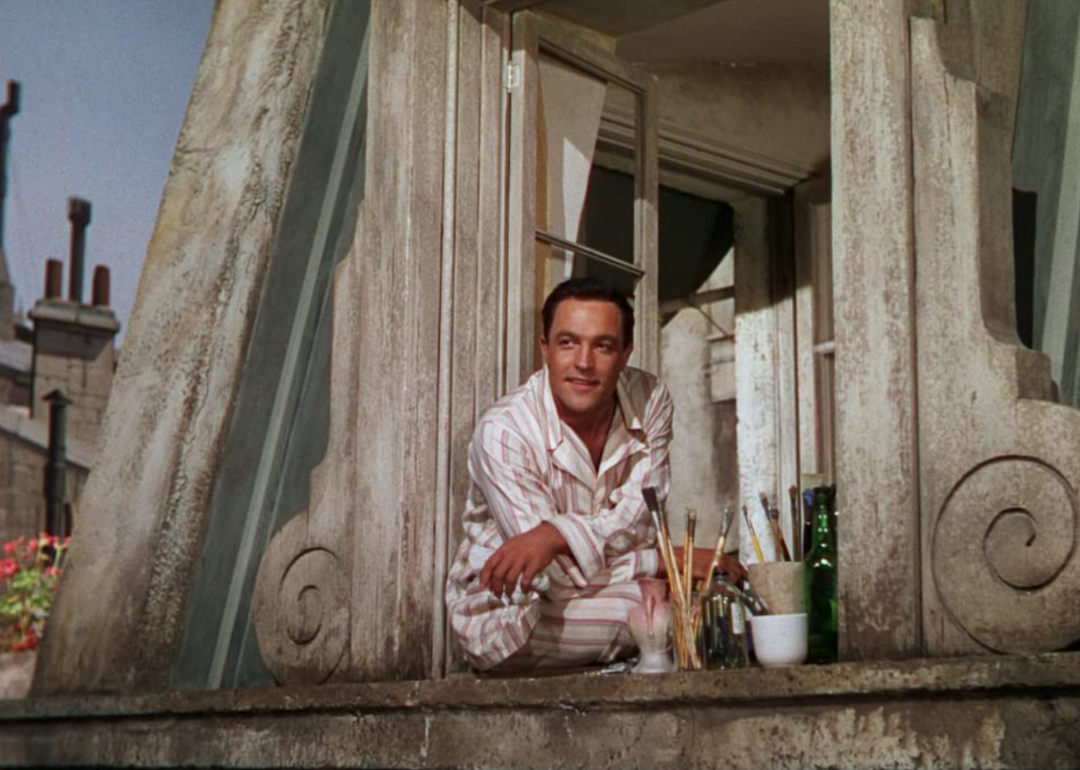
Metro-Goldwyn-Mayer (MGM)
#16. An American in Paris (1951) (tied)
Gene Kelly in a scene from ‘American in Paris’.
– Director: Vincente Minnelli
– Metascore: 83
– Highest-rated Metascore: 97 (“A Streetcar Named Desire”)
– Difference: 14 points
“An American in Paris” paved the way for musicals as strong contenders at the Academy Awards, a departure from the dramas which more often take center stage during Oscar season. Using stunning sets and released in Technicolor, the dazzling film is still lauded for its dance performances and color schemes. “A Streetcar Named Desire” on the other hand, is a stark contrast, a black-and-white depiction of struggles with abuse, violence, and sexuality. Despite being nominated for 12 Oscars and winning four, the film lost in the Best Picture category.
You may also like: Best Clint Eastwood movies
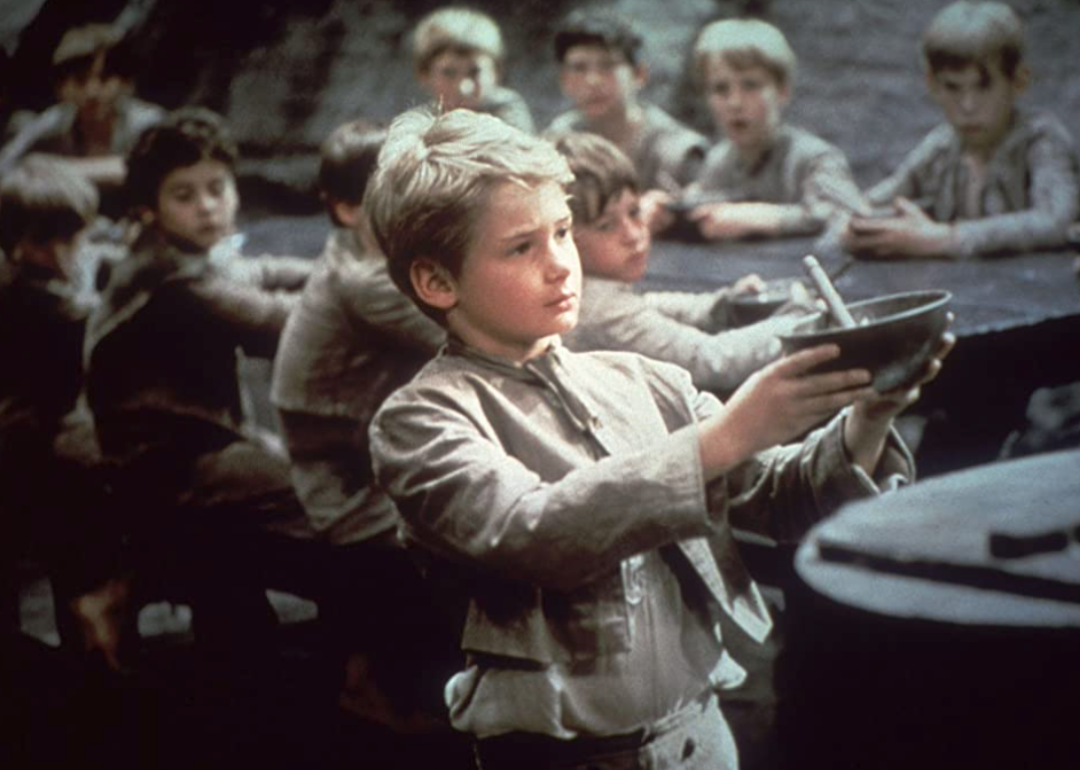
Columbia Pictures
#15. Oliver! (1968)
Mark Lester in ‘Oliver!’
– Director: Carol Reed
– Metascore: 74
– Highest-rated Metascore: 89 (“Funny Girl”)
– Difference: 15 points
Another musical to win Best Picture, “Oliver!” would be the last of its genre to win the coveted award until “Chicago” won in 2003. The win for this family-friendly British film marked an end to the Academy’s love affair with extravagant movie musicals. Many were shocked that “Funny Girl,” a critical and commercial musical success, did not secure a win, although leading woman Barbra Streisand took home the night’s Best Actress award, tying with Katharine Hepburn for “The Lion in Winter.”
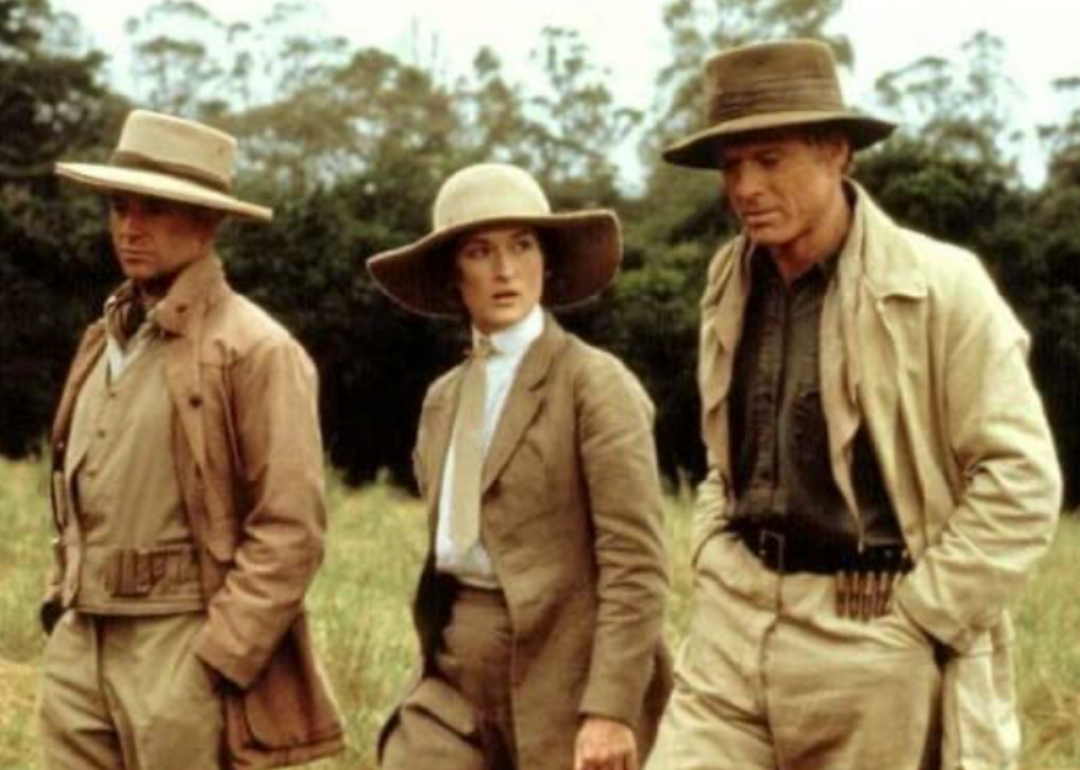
Universal Pictures
#13. Out of Africa (1985) (tied)
Robert Redford, Meryl Streep, and Michael Kitchen in ‘Out of Africa’.
– Director: Sydney Pollack
– Metascore: 69
– Highest-rated Metascore: 84 (“Prizzi’s Honor”)
– Difference: 15 points
“Out of Africa” may have taken home seven Oscars including Best Picture, but the film’s legacy is marred with criticisms of racism and colonialist ideals perpetuated by the film and its white lead characters, played by Meryl Streep and Robert Redford. Based on Danish aristocrat Karen Blixen’s autobiography, the book and movie have been denounced for dehumanizing Africans. When it was filmed on location in Kenya, complaints were made on set as African film extras were demeaned by requests from the filmmakers to appear almost nude during filming.
“Prizzi’s Honor,” on the other hand, was Jack Huston’s penultimate film as a director. It carefully blends a story of romance, crime, and comedy with Jack Nicholson and Kathleen Turner starring as lovers and assassins hired to kill each other.
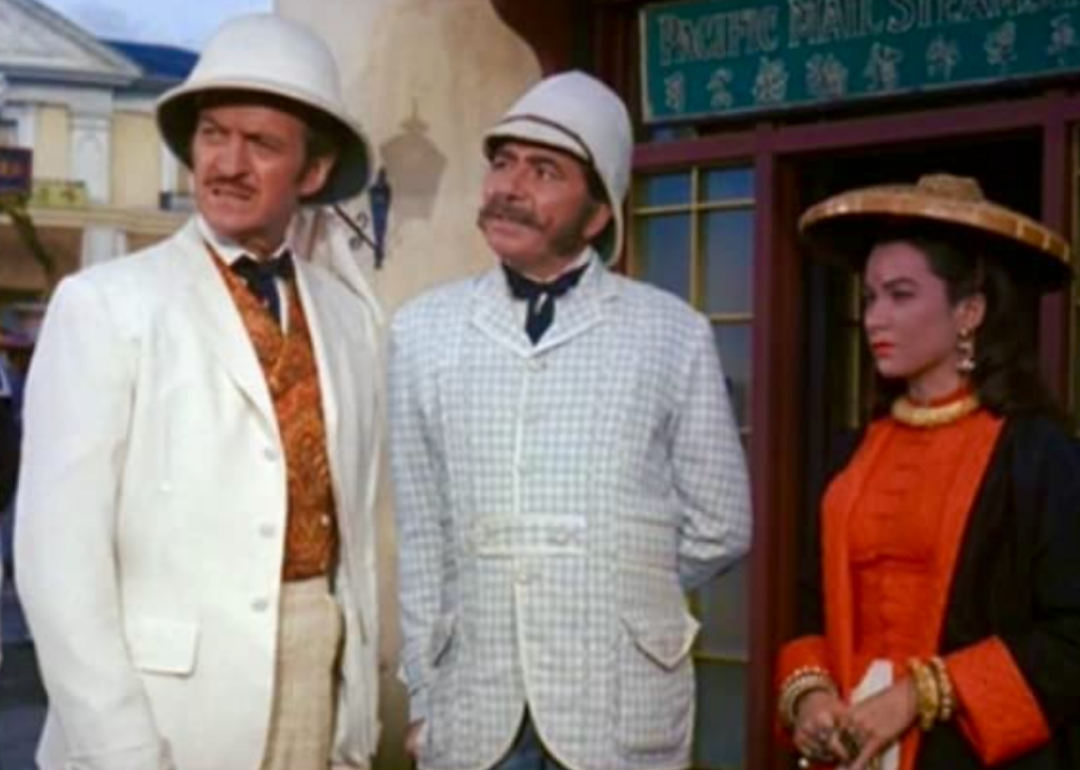
Warner Brothers
#13. Around the World in 80 Days (1956) (tied)
David Niven and Cantinflas in ‘Around the World in 80 Days’.
– Directors: Michael Anderson, John Farrow
– Metascore: 69
– Highest-rated Metascore: 84 (“Giant”)
– Difference: 15 points
The Academy may have gotten caught up in the glamour of a big-budget film for the 1957 ceremony. “Around the World in 80 Days,” was filled with star-studded cameos and intricate sets. While the film dazzled viewers at the time, “Giant” was a stark contrast among the Best Picture category nominees, a film that touched on timely political issues, such as materialism, racial prejudice, classism, corruption, and women’s equality, with the West Texas plains as a stark backdrop. Led by Elizabeth Taylor, Rock Hudson, and James Dean in his final film role, history has taken the side of “Giant” as a more deserving winner for Best Picture.
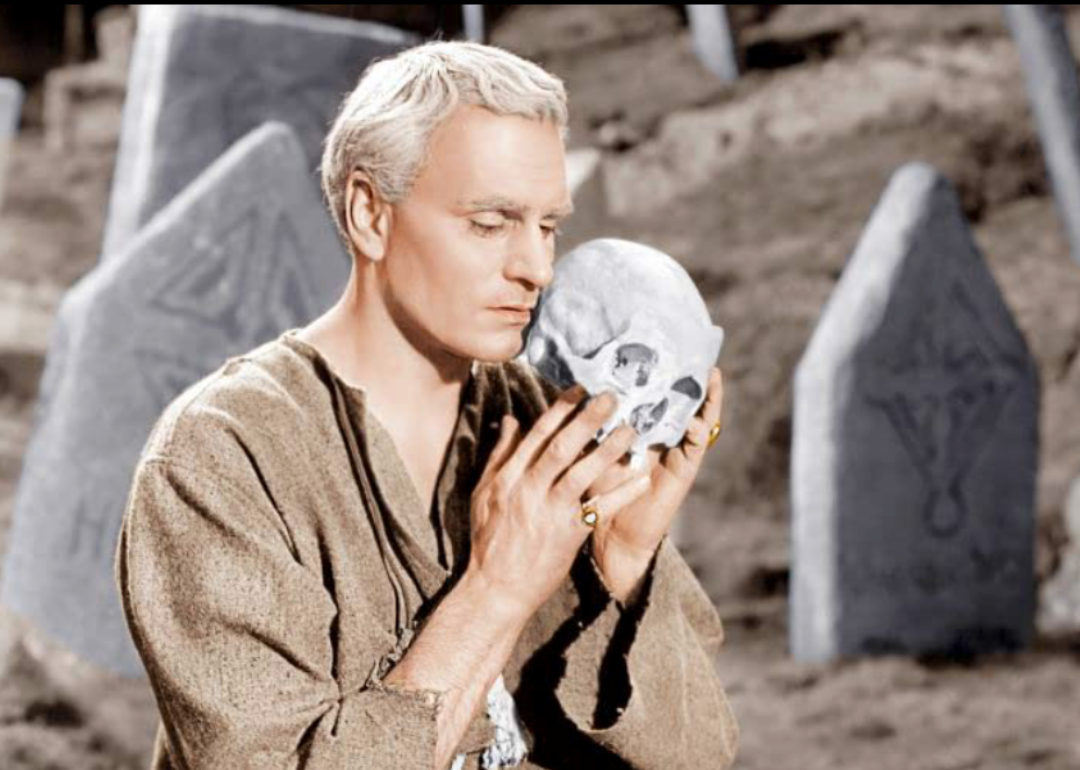
Metro-Goldwyn-Mayer (MGM)
#12. Hamlet (1948)
Laurence Olivier in ‘Hamlet’.
– Director: Laurence Olivier
– Metascore: 82
– Highest-rated Metascore: 98 (“The Treasure of the Sierra Madre”)
– Difference: 16 points
Laurence Olivier’s adaptation of “Hamlet” may have shaken Shakespeare devotees at the time with his analysis of the famous play and certain liberties he took while adapting it for the silver screen. Olivier’s technical and creative prowess, however, shows in his camerawork, and the Freudian overtones displayed nods to the titular character’s tortured subconscious. In that same year, “The Treasure of Sierra Madre,” about two Americans in 1920s Mexico searching for gold in the Sierra Madre mountains, was a strong contender for Best Picture, but ultimately lost. It is the highest-rated nominee to not win Best Picture, after “Boyhood” and “Citizen Kane.”
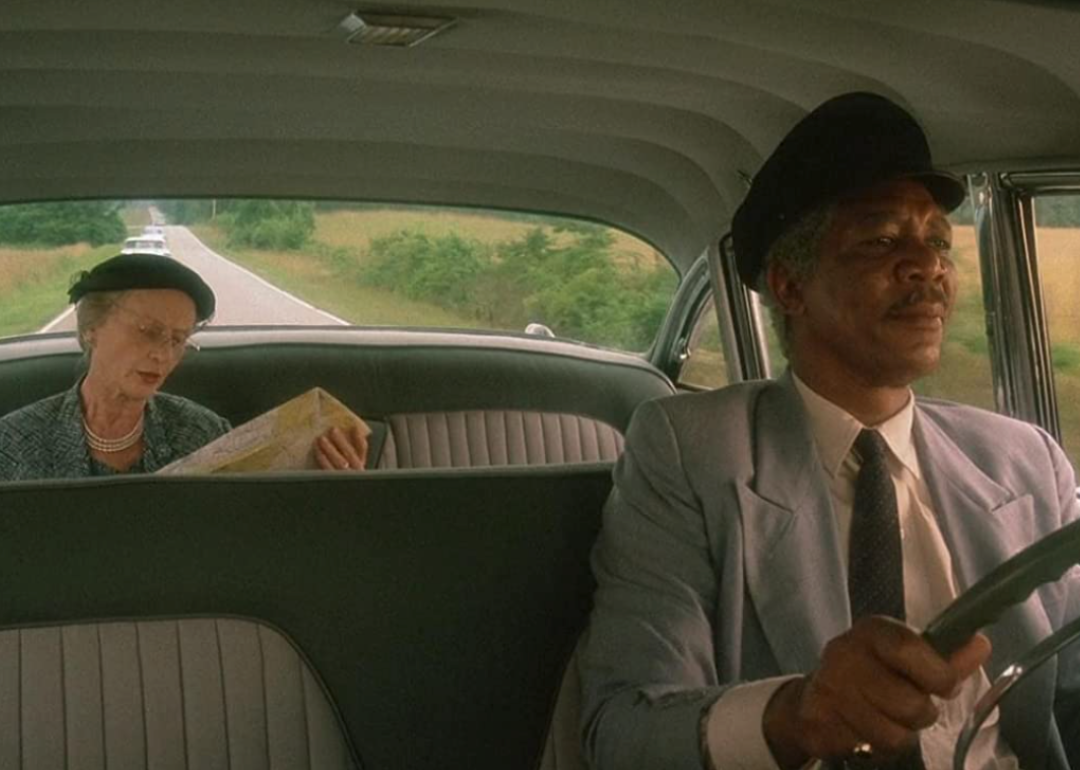
The Zanuck Company
#11. Driving Miss Daisy (1989)
Jessica Tandy and Morgan Freeman in ‘Driving Miss Daisy’.
– Director: Bruce Beresford
– Metascore: 81
– Highest-rated Metascore: 97 (“My Left Foot”)
– Difference: 16 points
Perhaps one of the most controversial films to win Best Picture, “Driving Miss Daisy” was considered a misguided attempt at tackling racism and prejudice in America, although it was a soft try at best. Noticeably excluded from the Best Picture nominations that year was Spike Lee’s “Do the Right Thing,” a striking social commentary set in Brooklyn as it endures a heat wave. Many felt that the biopic on painter Christy Brown, portrayed by Daniel Day-Lewis in “My Left Foot,” was a poignant drama snubbed by the Academy in favor of “Driving Miss Daisy,” and is currently one of the highest-rated nominees to lose out on the award, trailing behind “The Treasure of the Sierra Madre.”
You may also like: Classic movie quotes that have broken into our daily vocabulary
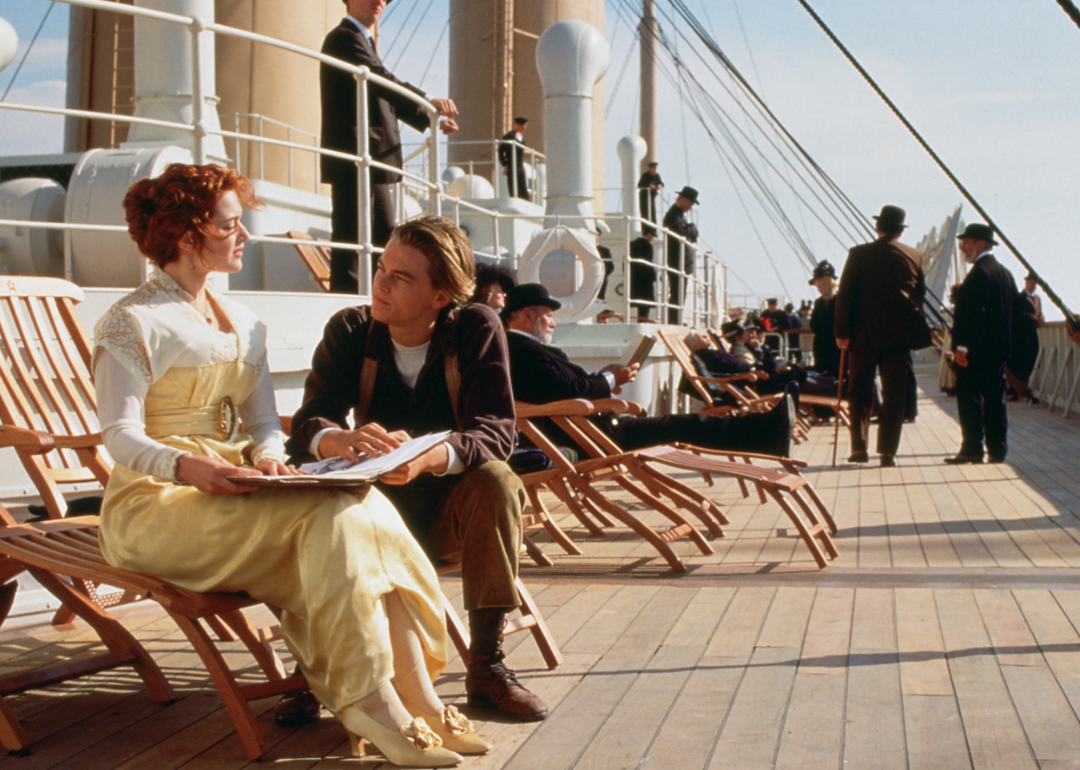
Paramount Pictures
#10. Titanic (1997)
Leonardo DiCaprio and Kate Winslet in a scene from ‘Titanic’.
– Director: James Cameron
– Metascore: 75
– Highest-rated Metascore: 91 (“L.A. Confidential”)
– Difference: 16 points
The highest-grossing Best Picture winner of all time, “Titanic” remains a romantic epic classic, revolutionary in its use of special effects. It nearly swept the 1998 Academy Awards, winning 11 out of 14 nominations. Despite its success, fellow nominee “L.A. Confidential” garnered significantly higher praise from critics but was overshadowed by the critical and commercial success of “Titanic,” leaving this gritty tale of police corruption and violence in Los Angeles in the dust.
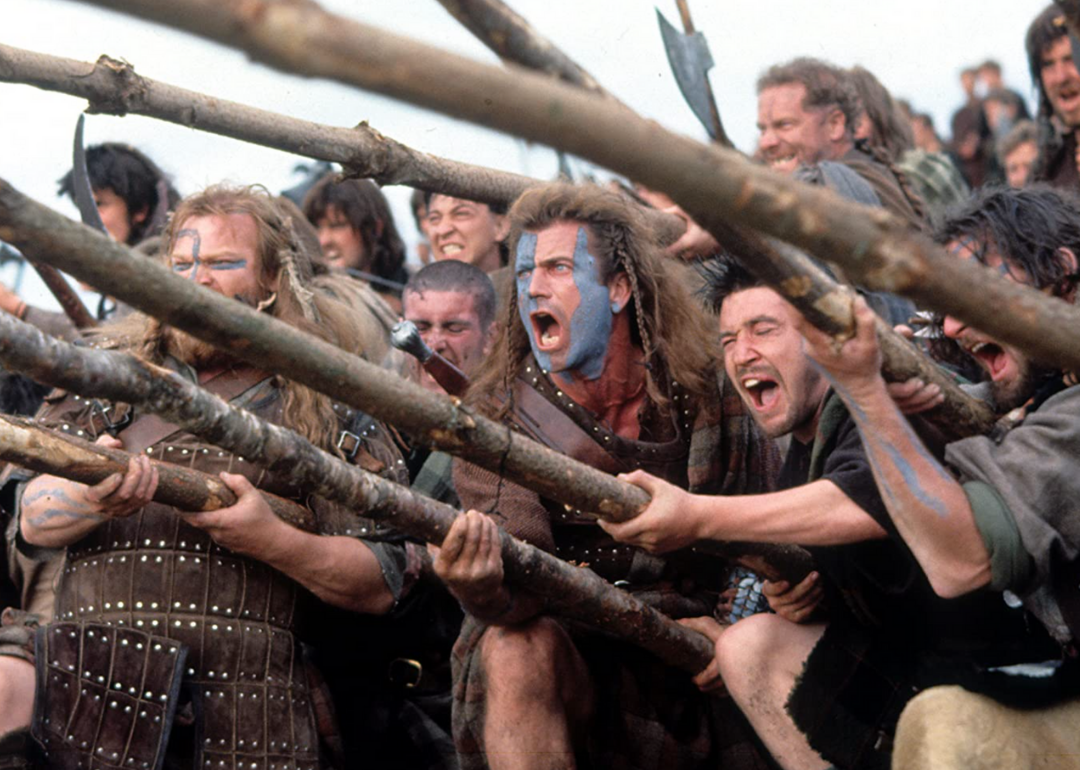
Paramount Pictures
#9. Braveheart (1995)
Mel Gibson, Brendan Gleeson and David O’Hara in ‘Braveheart’.
– Director: Mel Gibson
– Metascore: 68
– Highest-rated Metascore: 84 (“Sense and Sensibility”)
– Difference: 16 points
Among the five best picture nominees of 1996, “Braveheart” has the lowest Metascore, while “Sense and Sensibility” received the highest. Mel Gibson’s historical epic depicting the Battle of Stirling Bridge is riddled with historical inaccuracies. Despite the glaring dramatic liberties taken, the film’s many quotes on freedom continue to ring true in popular culture. Meanwhile, the adaptation of Jane Austen’s novel “Sense and Sensibility,” written for the screen by star Emma Thompson, is a vast contrast, a lovely and witty tale of two sisters and their romances and responsibilities in the English countryside.
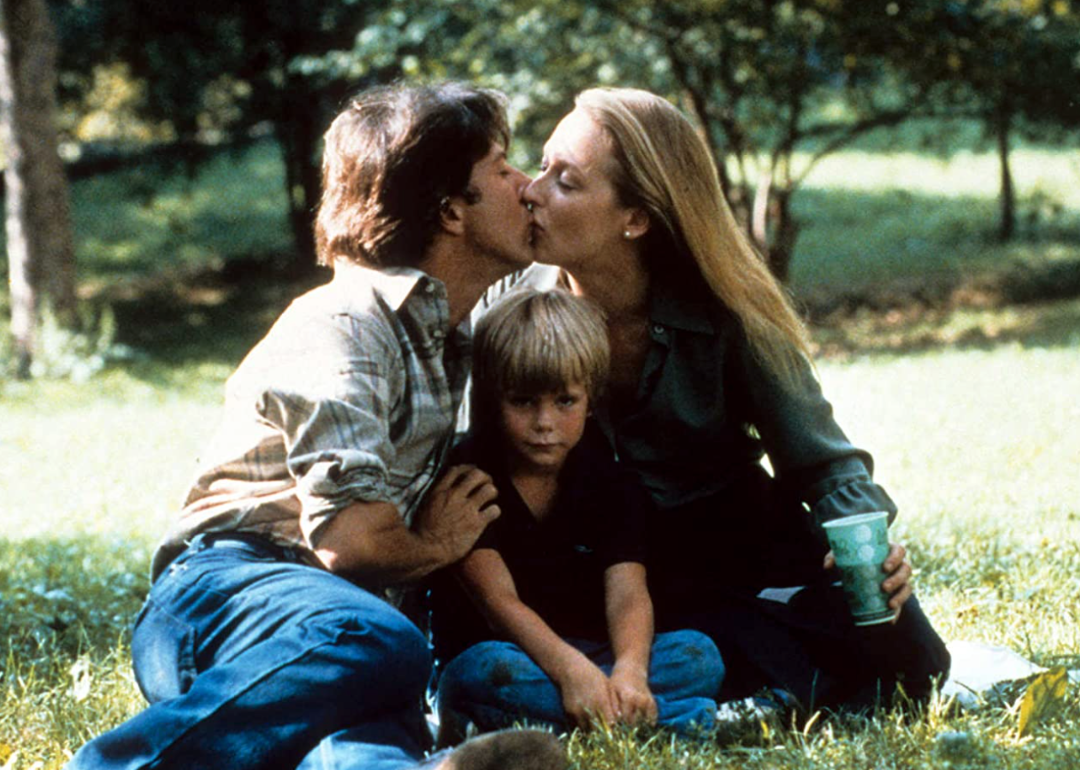
Columbia Pictures
#8. Kramer vs. Kramer (1979)
Dustin Hoffman, Meryl Streep, and Justin Henry in ‘Kramer vs. Kramer’.
– Director: Robert Benton
– Metascore: 77
– Highest-rated Metascore: 94 (“Apocalypse Now”)
– Difference: 17 points
Despite its flaws, “Kramer vs. Kramer” brought the conversation around divorce into the mainstream, with touching performances by Dustin Hoffman and Meryl Streep. Many were surprised that the Vietnam War film “Apocalypse Now” didn’t take home the gold that year, as it is widely considered a cinematic masterpiece. The prevailing view at the time (that it took a negative stance on America’s role in Vietnam) probably didn’t help its case in the end.
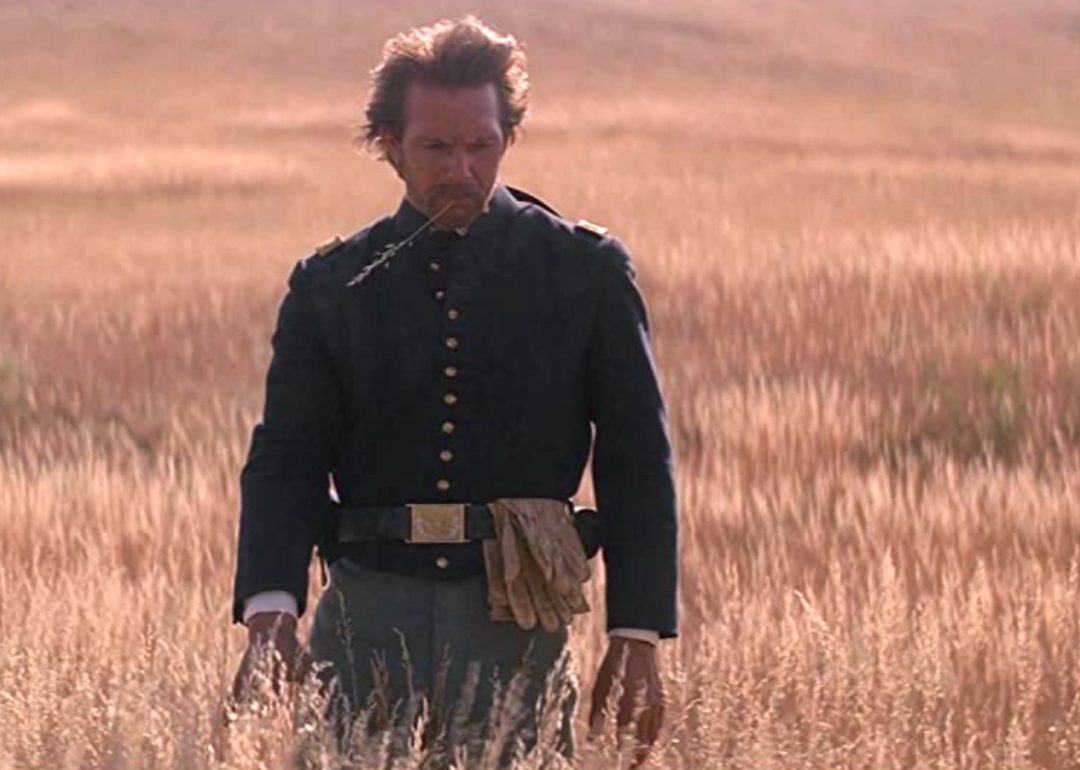
Metro-Goldwyn-Mayer (MGM)
#6. Dances with Wolves (1990) (tied)
Kevin Costner in ‘Dances with Wolves’.
– Director: Kevin Costner
– Metascore: 72
– Highest-rated Metascore: 91 (“Goodfellas”)
– Difference: 19 points
While “Goodfellas” remains a defining film of the 1990s, it was defeated in the Best Picture category by “Dances with Wolves,” directed by and starring Kevin Costner. While the film brought light to the plight of Native Americans, some say it also perpetuated stereotypes and took on the “white savior” trope often seen in feature films. Some Native American actors, however, do acknowledge that the film helped open doors. “Goodfellas,” on the other hand, is a gritty and morally ambiguous story of criminals. Ultimately, “Dancing with Wolves” proved more palatable for Academy voters.
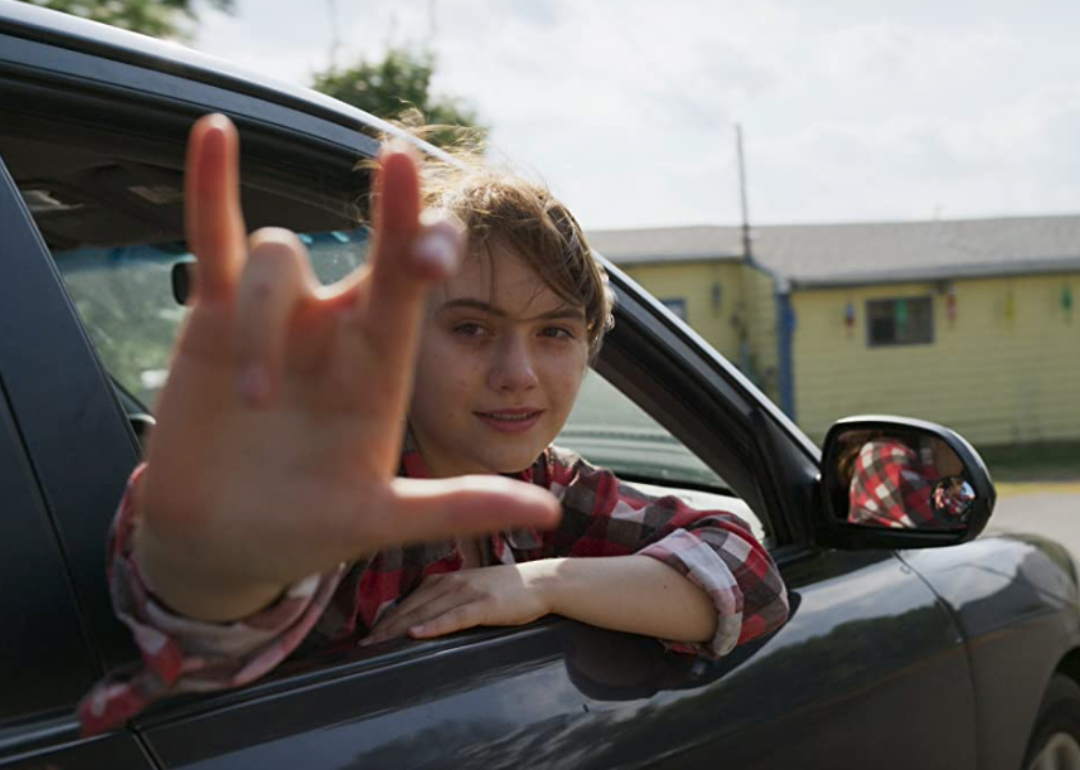
Apple Original Films
#6. CODA (2021) (tied)
Emilia Jones in ‘CODA’.
– Director: Sian Heder
– Metascore: 72
– Highest-rated Metascore: 91 (“Drive My Car”)
– Difference: 19 points
While “CODA” proved to be inspirational in its casting—with the three deaf characters in the film being portrayed by deaf actors—the film was criticized for relying heavily on overused plotlines for deaf characters. In contrast, the critically acclaimed “Drive My Car” by Japanese director Ryûsuke Hamaguchi proved to be another snub by the Oscars for a foreign language film taking Best Picture. The story, which centers on an actor and director coping with his wife’s sudden passing, is decidedly more somber compared to “CODA.”
You may also like: 100 best fantasy movies of all time
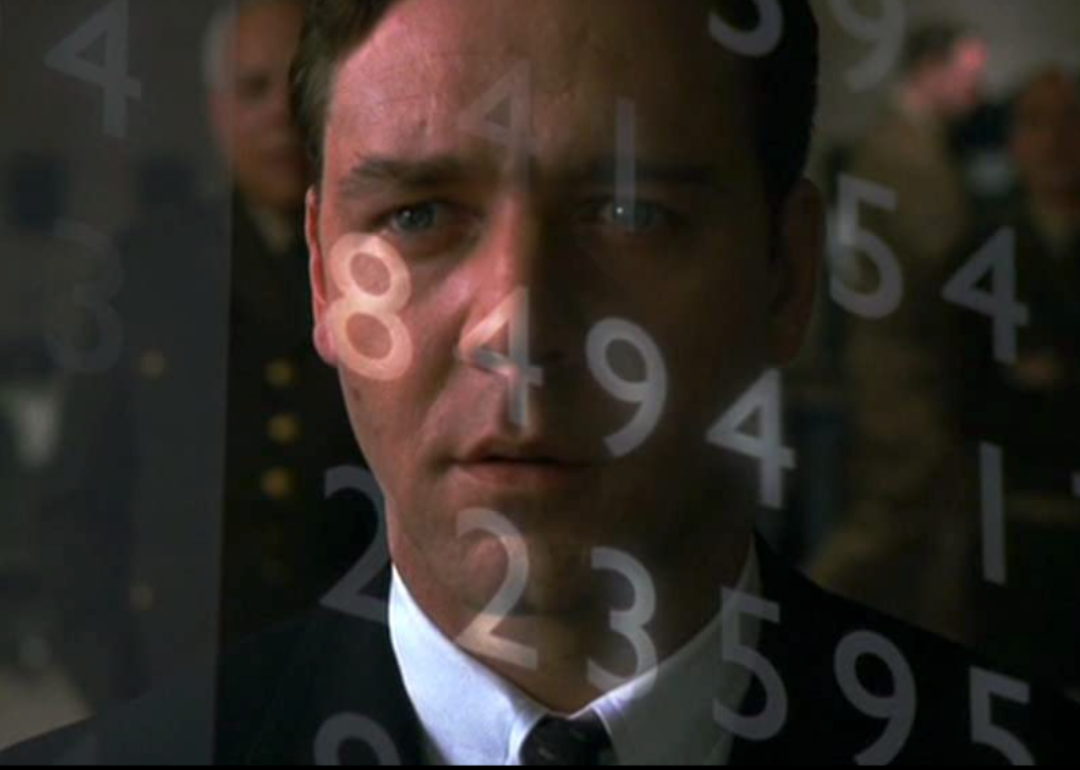
Imagine Entertainment
#5. A Beautiful Mind (2001)
Russell Crowe in ‘A Beautiful Mind’.
– Director: Ron Howard
– Metascore: 72
– Highest-rated Metascore: 92 (“The Lord of the Rings: The Fellowship of the Ring”)
– Difference: 20 points
While “A Beautiful Mind” enchanted viewers at the time, controversy has met the film for what many consider to be an inaccurate and dangerous portrayal of schizophrenia, as Russell Crowe’s character seemingly uses sheer willpower to conquer the illness and abandons his medications. “A Beautiful Mind” beat out more critically acclaimed contenders like “Gosford Park” and “The Lord of the Rings: The Fellowship of the Ring,” with the latter receiving 13 nominations at the 2002 Academy Awards.
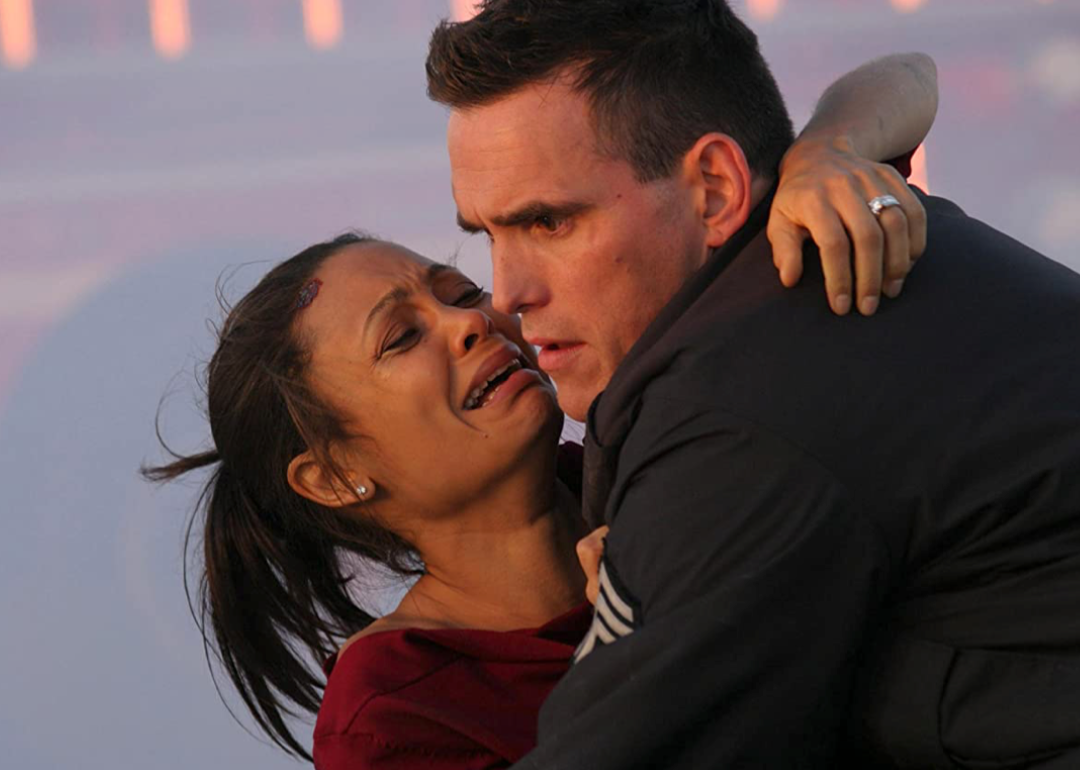
Bob Yari Productions
#4. Crash (2004)
Matt Dillon and Thandiwe Newton in ‘Crash’.
– Director: Paul Haggis
– Metascore: 66
– Highest-rated Metascore: 88 (“Capote”)
– Difference: 22 points
“Crash” delighted and captivated audiences upon its release, but has not withstood the test of time, receiving backlash upon its Best Picture win for its shallow examination of racial prejudice. It is the third-lowest Best Picture-winning Metascore ever and the lowest-rated nominee from the 2006 Oscars. Philip Seymour Hoffman’s portrayal of controversial writer Truman Capote in “Capote” is what makes the film shine. Both “Capote” and “Brokeback Mountain” are considered to be Best Picture snubs of that year.
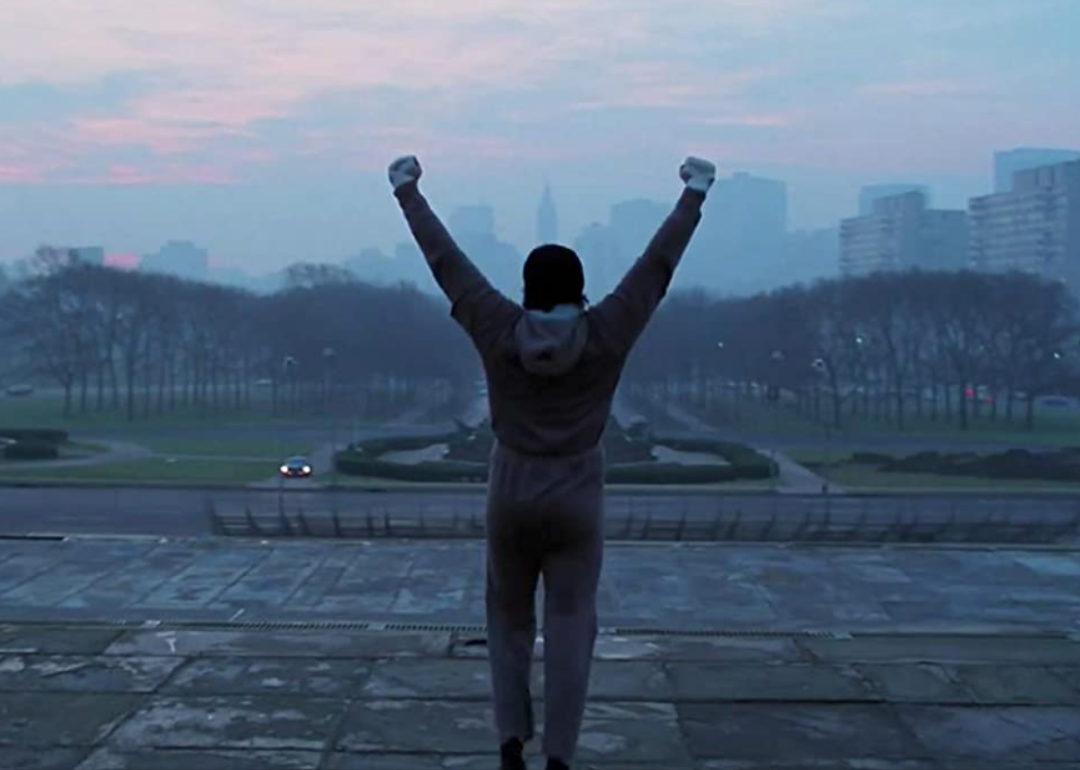
Metro-Goldwyn-Mayer (MGM)
#3. Rocky (1976)
Sylvester Stallone in ‘Rocky’.
– Director: John G. Avildsen
– Metascore: 70
– Highest-rated Metascore: 94 (“Taxi Driver”)
– Difference: 24 points
While “Rocky” remains a classic in sports film history, the film tied with “Bound for Glory” as the lowest-rated Metascore of the five Best Picture nominees that year. With critically applauded films like “Network” and “All the President’s Men” (Metascores 83 and 84, respectively) in the running, it was surprising to some that the feel-good Sylvester Stallone film won the Academy’s most prestigious award. While criticism was mixed upon the release of Martin Scorsese’s dark and twisted crime drama “Taxi Driver,” the film has been dubbed one of the greatest films of the last century. Sadly, its portrait of a deranged lone gunman has become relevant over time.
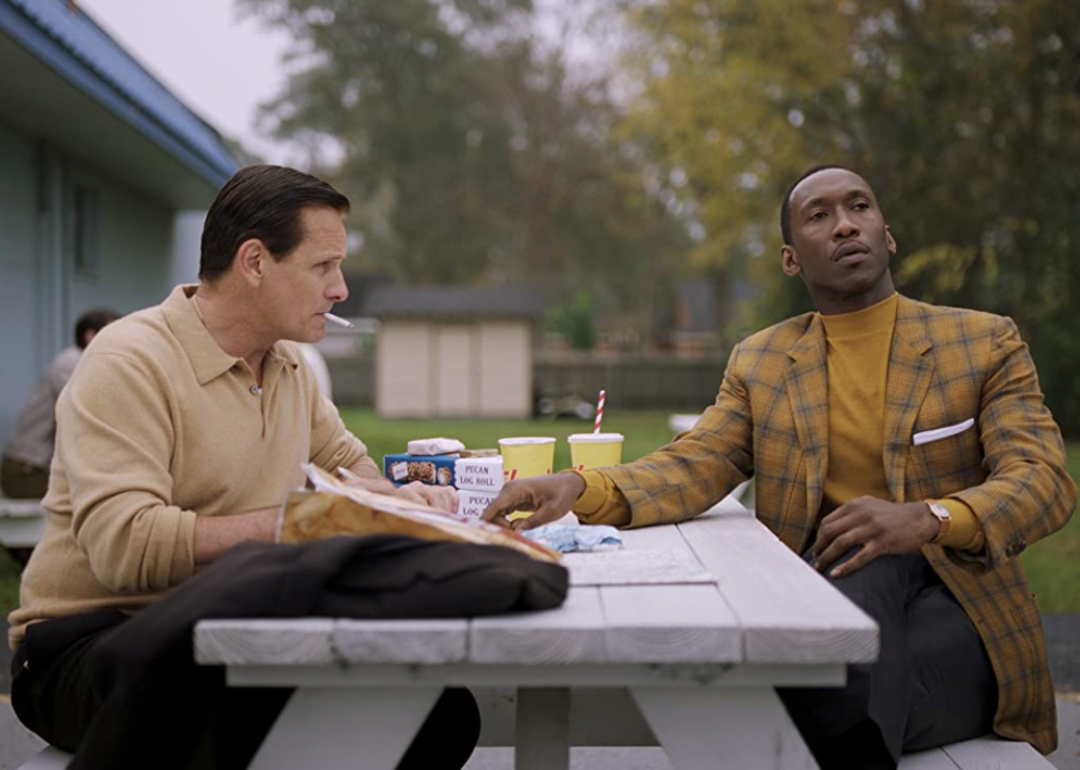
Universal Pictures
#2. Green Book (2018)
Viggo Mortensen and Mahershala Ali in ‘Green Book’.
– Director: Peter Farrelly
– Metascore: 69
– Highest-rated Metascore: 96 (“Roma”)
– Difference: 27 points
When “Green Book” won Best Picture, it was met with widespread criticism despite early success in the festival circuit, winning the Toronto International Film Festival’s People’s Choice Award. Its critics pointed out that its narrative easily fell into the trap of a watered-down examination of racism. What’s more, despite the title, the movie hardly acknowledged the “Negro Motorist Green Book,” a guide written by Victor H. Green for African American travelers throughout the country, designating safe zones and warning of treacherous and deadly sundown towns.
Despite its loss, Alfonso Cuarón’s emotionally turbulent black-and-white film, “Roma” received awards for Best Director, Cinematography, and was the first Mexican film to win Best Foreign Language Film.
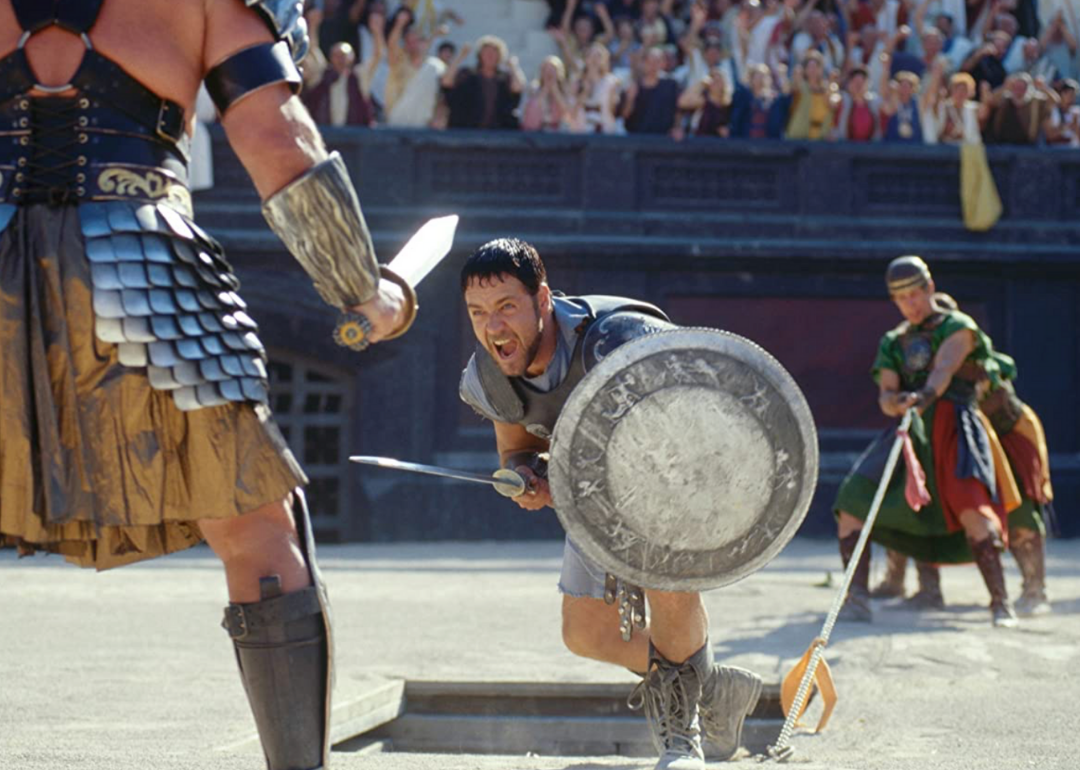
Dreamworks LLC & Universal Pictures
#1. Gladiator (2000)
Russell Crowe in a scene from ‘Gladiator’.
– Director: Ridley Scott
– Metascore: 67
– Highest-rated Metascore: 94 (“Crouching Tiger, Hidden Dragon”)
– Difference: 27 points
The brutal historical epic starring Russell Crowe, marketed as an action-packed summer blockbuster, “Gladiator” secured 12 Oscar nominations, walking away with wins in five categories including Best Picture.
Meanwhile, “Crouching Tiger Hidden Dragon” awed audiences and immersed them in an ancient Chinese world filled with masterful, gravity-defying warriors. The Taiwanese film, directed by Ang Lee, seemed like a strong contender for Best Picture but ultimately settled for wins in Best Foreign Language Film, Art Direction, Original Score, and Cinematography. Upon its release, it became the only non-English language film to make it over the $100 million mark in the U.S. on a $17 million budget. Furthermore, wuxia, the Chinese martial arts film genre, has cemented itself as a classic in worldwide cinema.
You may also like: 100 greatest movie songs from 100 years of film
